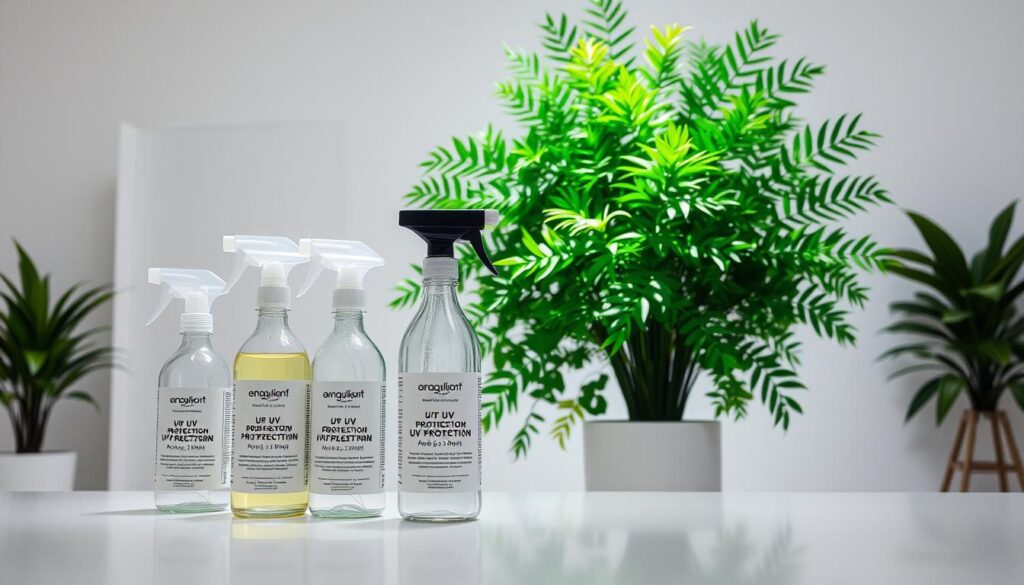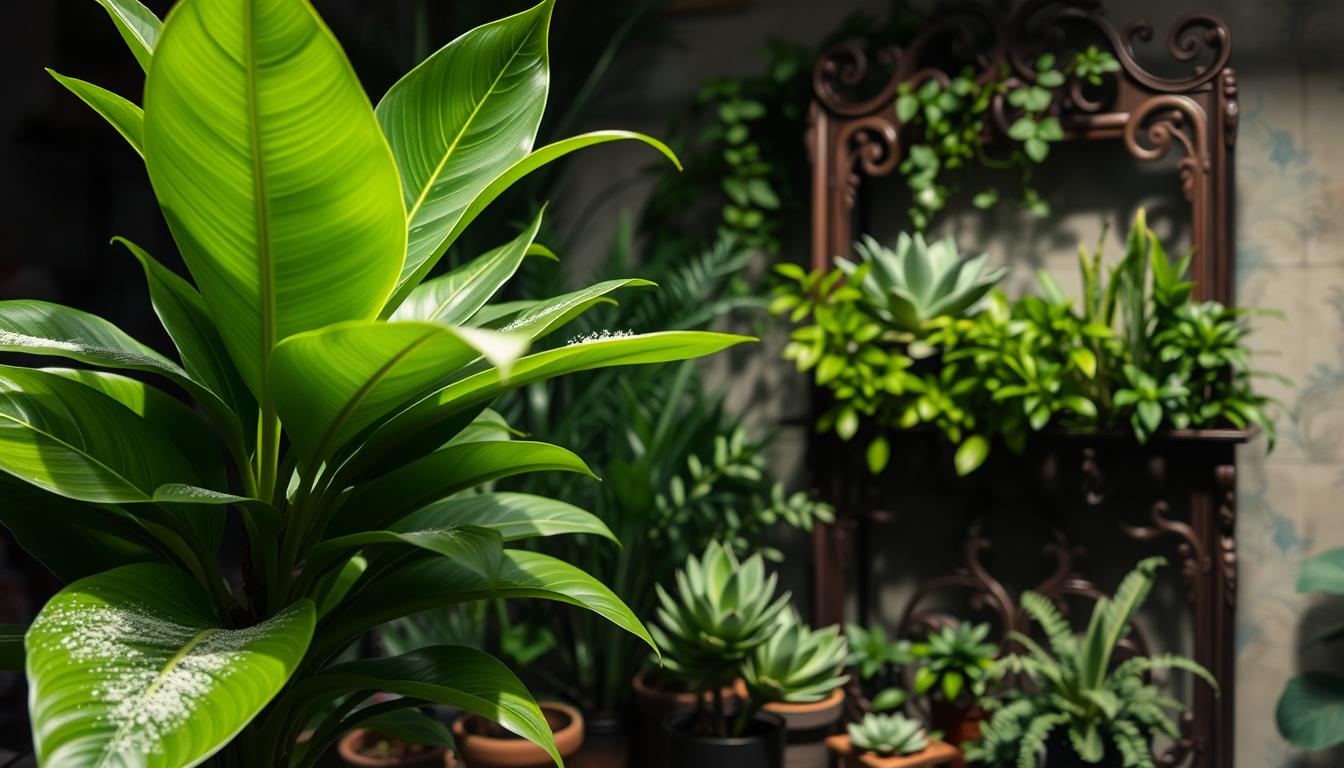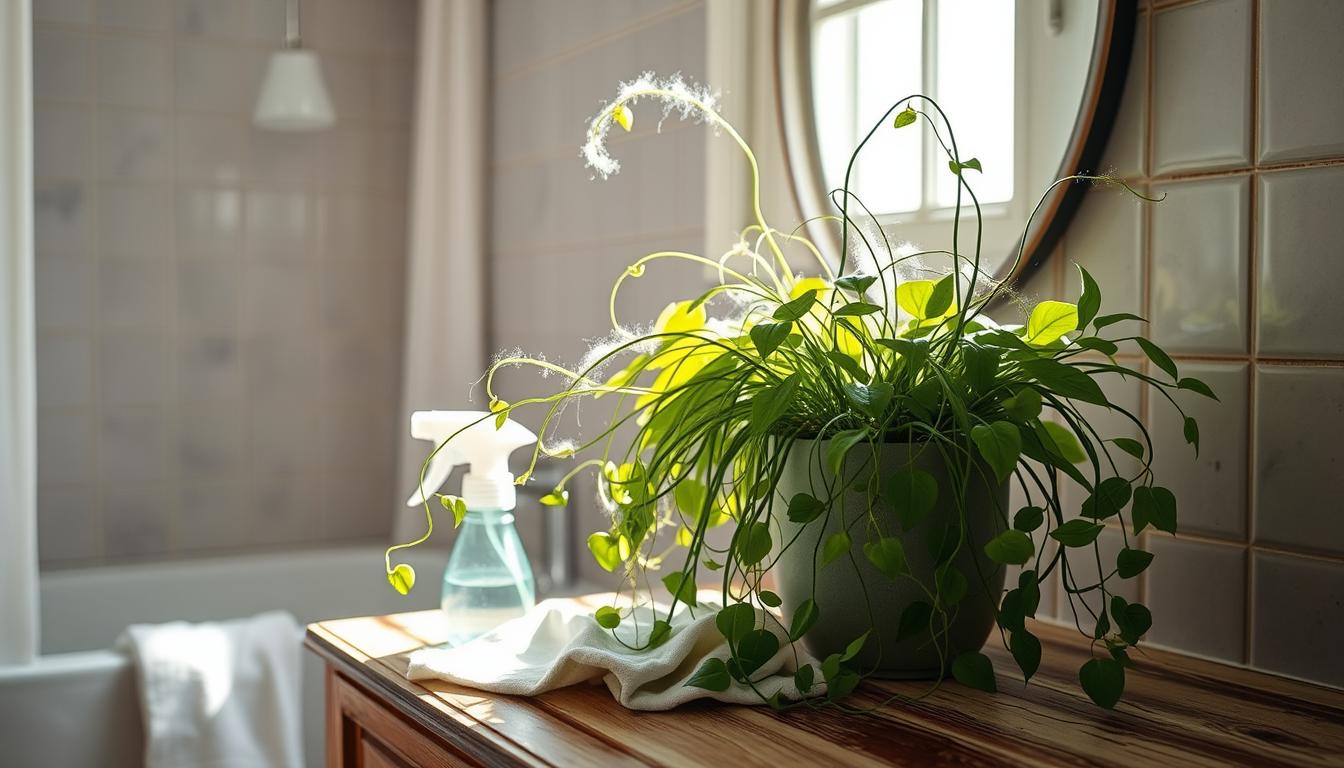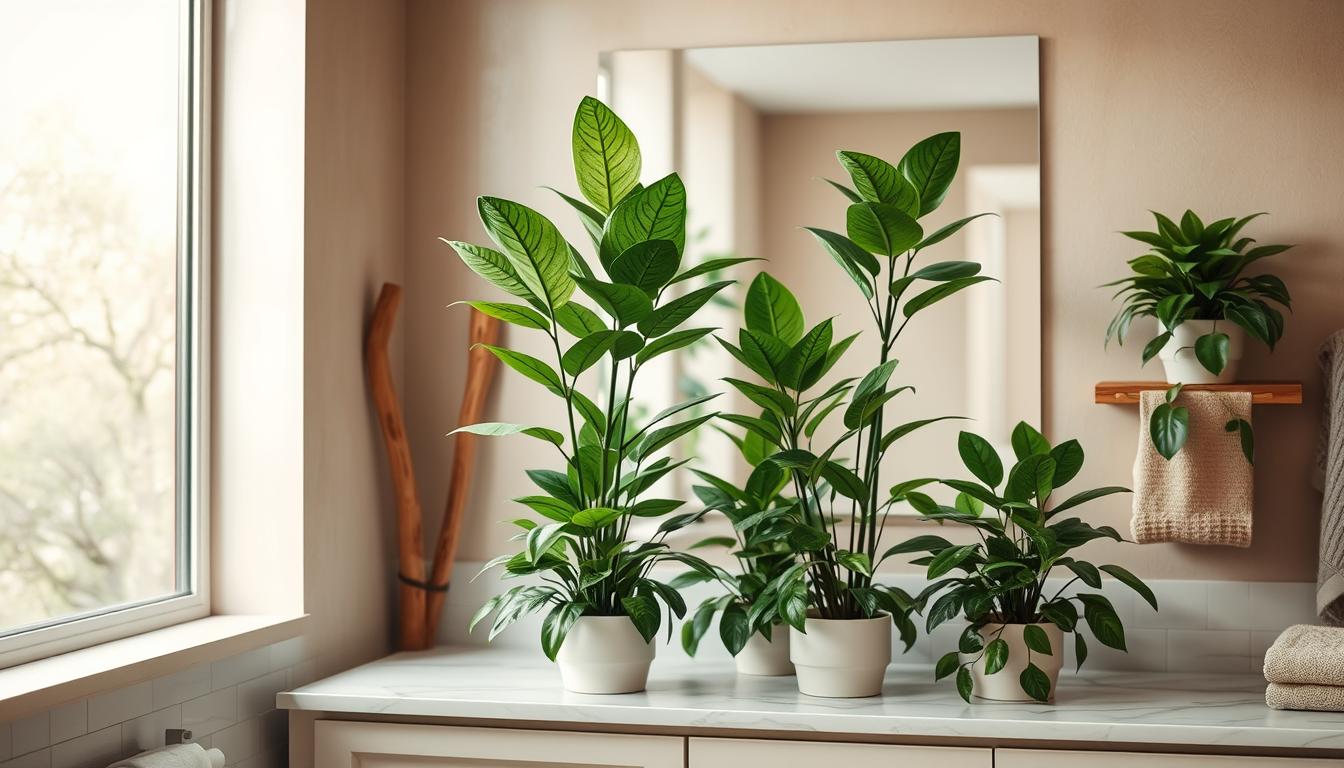More and more homeowners are using artificial greenery to beautify spaces. But, in damp areas, keeping them bright and long-lasting is key. This part talks about how to keep artificial plants looking great, even when they’re wet.
Understanding Artificial Greenery Materials
Nowadays, there are many materials for artificial plants available in the market. Each type suits different tastes and needs, particularly when it comes to outdoor use. In this section, we’ll talk about the major materials used in artificial plants. We’ll also explain why picking UV-protected plants is smart.
Types of Materials Used
The main materials for making artificial greenery are:
- PVC: Polyvinyl chloride is a strong plastic. It resists harsh weather and sunlight well.
- Polyester: This synthetic fabric is chosen for its toughness and ability to keep colors bright.
- Silk: Silk looks very real but is usually best for inside, unless it’s treated for outdoor use.
These materials are great for outdoor use. They can take on different weather conditions without changing shape or color.
Benefits of UV-Protected Artificial Plants
Choosing plants that are protected against UV rays has big benefits. UV protection keeps the colors from fading under the sun. This means your artificial plants keep looking fresh and colorful. UV-protected plants are more durable and look better, making them perfect for outside use. Plus, they cut down the need to buy new plants often.
Choosing the Right Artificial Plants for Damp Conditions
When looking for artificial plants for wet areas, think carefully about their features. The right features make your plants last longer and look better. This part tells you what to look for so your fake greenery can handle the dampness.
Outdoor-Safe Labels
Always check for outdoor-safe plants first. These plants are treated to handle moisture and sunlight. This treatment helps them stay colorful and strong, even when outside.
Quality of Construction
The way artificial plants are made is key to their strength. High-quality plants use strong materials to fight moisture and temperature changes. Choosing these plants means less worry about them getting damaged.
Seek out plants made for the outdoors with special materials and tech. These plants are better suited for facing outdoor challenges.
Essential Care Tips for Artificial Greenery
To keep artificial plants looking good, consistent care and cleaning are key. Regular cleaning boosts their look and extends their life. Here are important tips for maintaining your artificial greenery.
Regular Cleaning Techniques
Keeping artificial plants bright requires regular cleaning. Here are some good ways to clean them:
- Hose down outdoor plants to get rid of dust and debris.
- Use a damp cloth for indoor plant leaves.
- Soft brushes work well for detailed cleaning without harm.
How to Remove Dirt and Dust
Cleaning off dirt and dust can make your plants look much better. Here’s how:
- Use a soft brush to gently remove debris, especially in hard-to-reach spots.
- If there’s a lot of dirt, mist the leaves with water and then use a microfiber cloth to clean.
- Stay away from strong chemicals to avoid damaging the plants.
Keeping Artificial Greenery Fresh and Vibrant in Damp Conditions
To keep artificial plants fresh in damp areas, you need to think carefully about their placement. Putting them in sheltered spots helps a lot. This avoids too much moisture that can ruin the plants. Try placing them under coverings like awnings or in areas shielded from the elements.
Make sure to move your artificial plants around often. This makes sure they get light equally and stay looking good longer. On rainy or very humid days, cover them up. This helps a lot in keeping them in top shape.
Check on your plants often to spot any fading or damage early. By taking care of problems right away, your artificial plants will keep making your place look great.
Protecting Your Plants from Excess Moisture
It’s important to keep artificial plants safe from too much moisture. This keeps them looking good and lasting longer. Using good drainage and placing them correctly can stop water build-up that ruins fake plants. Here are key tips for managing moisture well.
Drainage Considerations
Good drainage is key for artificial plant health. To avoid too much moisture, remember these tips:
- Choose pots with drainable holes to let extra water out.
- Put a layer of gravel or stones in the pot’s bottom to help with draining.
- Check the soil’s moisture often to make sure it’s not too wet.
- For plants outside, make sure the area slopes to move water away from the pot.
Moving Plants in Inclement Weather
Moving artificial plants helps them last longer in bad weather. When bad weather comes:
- Move plants to covered areas like patios or under awnings.
- Using portable planters makes moving them easy when needed.
- During harsh weather, cover plants to protect them from damage.
- Watch the weather forecast to move plants before it gets really bad.
The Role of UV Sprays in Maintenance
Keeping artificial plants bright and lasting long needs care, like UV protection. UV sprays are key for this. They block harmful sun rays from reaching faux plants. By using these sprays, plants keep their strong colors and last longer. It’s important to make sure the spray covers every part well.
How to Apply UV Protection
Follow these steps to apply UV sprays correctly:
- Pick a high-quality UV spray meant for keeping artificial plants looking good.
- Make sure the plants are clean and dry. This helps the spray stick better.
- Keep the spray can about 6 to 12 inches away from the plant.
- Spray evenly over every part of the plant. Don’t forget the leaves, stems, and hidden spots.
- Wait for the spray to dry fully before you put the plants back where they go.
Putting on more layers is important, more so outside, where the sun quickly breaks down materials. Doing this often will make your fake plants stay lovely for a longer time. They’ll keep adding beauty to your space.

Seasonal Adjustments for Artificial Greenery
Taking care of artificial plants during different seasons is key. Knowing what to do in winter and summer keeps your fake plants looking great all year.
Winter Storage Tips
When it gets cold, paying extra attention to how you store your artificial plants is important. Here are some tips to help protect your decorations:
- Store plants in a dry, cool area to prevent moisture damage.
- Avoid exposing your artificial greenery to extreme cold, which could make them brittle.
- Place protective covers over larger pieces to shield them from dust and potential damage.
Summer Care Adjustments
In the warmer months, keeping your artificial plants’ colors bright takes a bit of work. Try these steps:
- Rotate plants occasionally to ensure even exposure to sunlight.
- Position items in shaded areas to protect against sun fading.
- Regularly clean plants to remove dust and debris that may accumulate during outdoor use.
Common Issues with Artificial Plants in Damp Conditions
Artificial plants make any room look better. But, they face challenges in moist places. These problems include fading, change in color, and growth of mold and mildew. Knowing about these issues helps recognize and fix them early.
Fading and Discoloration
Moisture can cause the colors of artificial plants to fade. This makes them less attractive and changes the room’s look. To stop fading, you can:
- Keep plants away from direct sunlight.
- Opt for UV-protected plants if they’re outside.
- Turn the plants now and then for equal light exposure.
Accumulation of Mold and Mildew
Mold and mildew growth is another big problem. It gets worse in damp environments. You might notice a bad smell or see spots on your artificial plants. To prevent mold and mildew, try these tips:
- Clean your artificial plants with a wet cloth regularly.
- Make sure there’s good air flow around the plants.
- Don’t overwater any real plants nearby to avoid extra moisture.
Conclusion
Taking care of fake plants means understanding the materials they’re made of. It also means making sure they’re well-built and looked after. We’ve talked about why it’s good to choose plants that don’t fade in sunlight and can handle a bit of water without losing their color.
Doing things like cleaning them often and putting them in the right spots can help them last longer. It’s also important to keep them from getting too wet. This helps them stay strong, even when the weather or indoor conditions change.
By following these tips, your fake plants will not only look beautiful but also make any area more welcoming. This shows that they are a smart choice, no matter what challenges they might meet.



